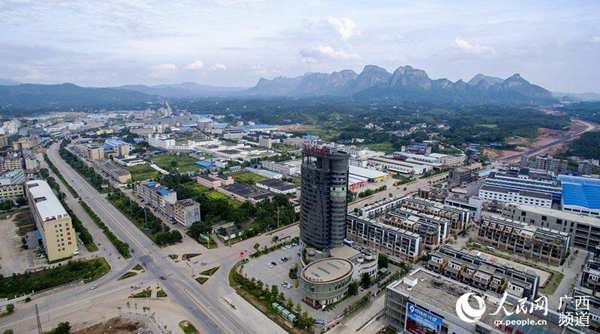

 |
A total of 57.4 per cent of China’s population lived in cities in 2016, up by 4.8 per cent since the end of 2012, the National Bureau of Statistics (NBS) said. The average disposable income per capita of urban residents was 33,616 RMB ($4,951), an annual increase of 6.5 per cent since 2012.
According to NBS, the number of cities in China stood at 657 by the end of last year, including 4 municipalities, 15 sub-provincial cities, 278 prefecture-level cities and 360 county-level cities.
The administration pointed out that China has gradually developed its urban agglomerations. The three major agglomerations in the Beijing-Tianjin-Hebei region, Yangtze River Delta and Pearl River Delta, accommodated 23 per cent of the country’s population with only 5.2 percent of territory, contributing 39.4 per cent to national GDP. This has become a significant platform that drives economic growth and promotes international cooperation and competition.
54.7 per cent of China’s population lived in cities as the urbanization rate continues to grow. By the end of 2015, 446.39 million people had registered for households in cities above prefectural level, giving an average annual growth rate of 3.5 per cent since 2012.
According to NBS, the scale of China’s urban economy has continuously expanded. The GDP of cities above prefectural level in 2015 totaled 42.84 trillion RMB, increasing by 33 per cent in comparison to 2012.
The expanded economy has resulted in increased livelihood expenditure. The public financial expenditure of cities reached 6.69 trillion RMB, a rise of 49.7 per cent compared to 2012.
China has further improved its people’s living standards and residential environment, the administration noted. In 2016, the disposable incomes of urban residents averaged 33,616 RMB, increasing by 9,489 RMB as compared to 2012. The country has experienced continuous improvements in livelihoods, upgrade of consumption structure and decreased share of food expenditure in household spending.
 Fire brigade in Shanghai holds group wedding
Fire brigade in Shanghai holds group wedding Tourists enjoy ice sculptures in Datan Town, north China
Tourists enjoy ice sculptures in Datan Town, north China Sunset scenery of Dayan Pagoda in Xi'an
Sunset scenery of Dayan Pagoda in Xi'an Tourists have fun at scenic spot in Nanlong Town, NW China
Tourists have fun at scenic spot in Nanlong Town, NW China Harbin attracts tourists by making best use of ice in winter
Harbin attracts tourists by making best use of ice in winter In pics: FIS Alpine Ski Women's World Cup Slalom
In pics: FIS Alpine Ski Women's World Cup Slalom Black-necked cranes rest at reservoir in Lhunzhub County, Lhasa
Black-necked cranes rest at reservoir in Lhunzhub County, Lhasa China's FAST telescope will be available to foreign scientists in April
China's FAST telescope will be available to foreign scientists in April "She power" plays indispensable role in poverty alleviation
"She power" plays indispensable role in poverty alleviation Top 10 world news events of People's Daily in 2020
Top 10 world news events of People's Daily in 2020 Top 10 China news events of People's Daily in 2020
Top 10 China news events of People's Daily in 2020 Top 10 media buzzwords of 2020
Top 10 media buzzwords of 2020 Year-ender:10 major tourism stories of 2020
Year-ender:10 major tourism stories of 2020 No interference in Venezuelan issues
No interference in Venezuelan issues
 Biz prepares for trade spat
Biz prepares for trade spat
 Broadcasting Continent
Broadcasting Continent Australia wins Chinese CEOs as US loses
Australia wins Chinese CEOs as US loses